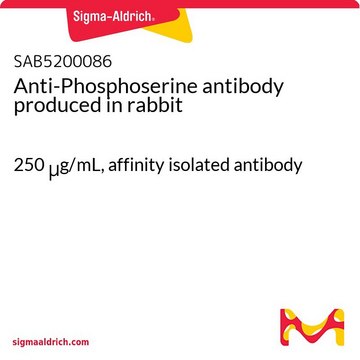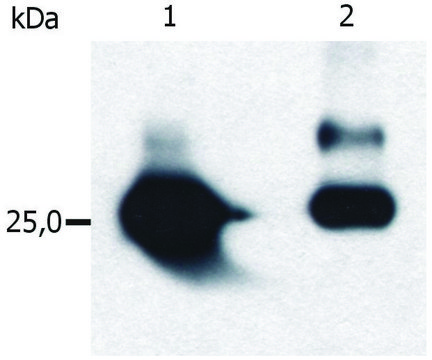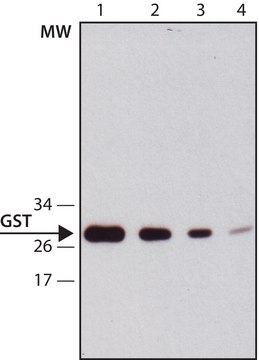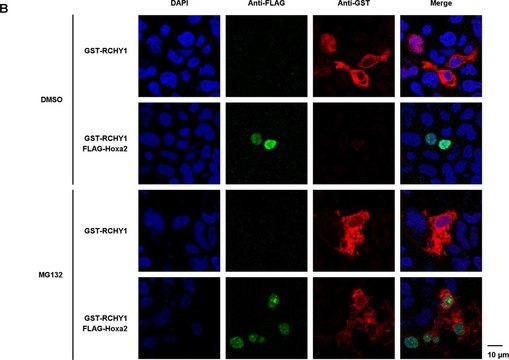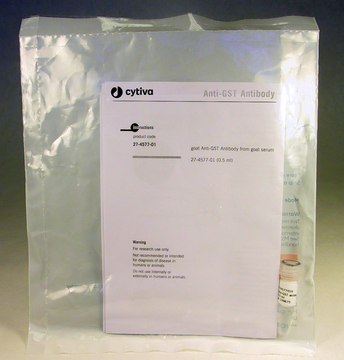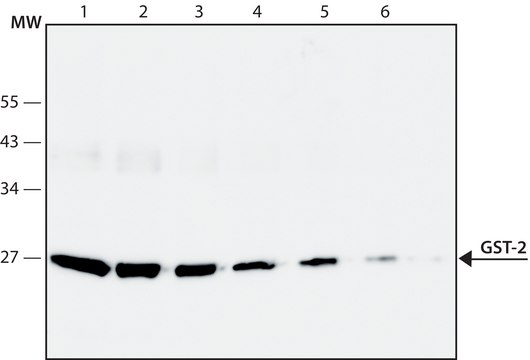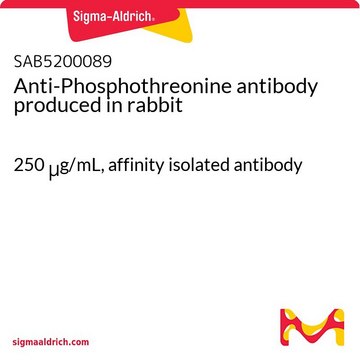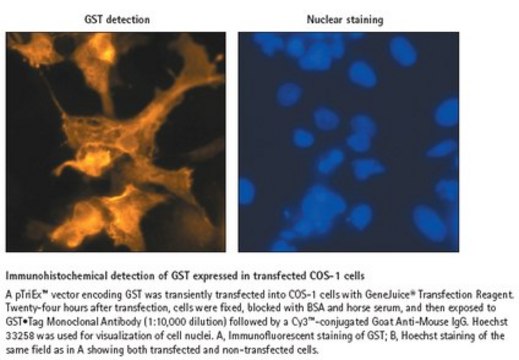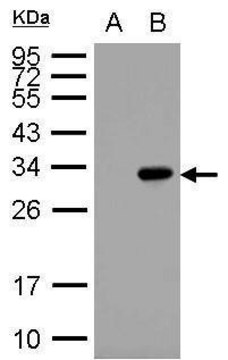SAB1305539
MONOCLONAL ANTI-GST TAG antibody produced in mouse
clone 9AT106, IgG fraction of antiserum, buffered aqueous solution
Synonym(s):
Hexahistidine-HIS
Sign Into View Organizational & Contract Pricing
All Photos(1)
About This Item
UNSPSC Code:
12352203
NACRES:
NA.43
Recommended Products
biological source
mouse
Quality Level
antibody form
IgG fraction of antiserum
antibody product type
primary antibodies
clone
9AT106, monoclonal
form
buffered aqueous solution
technique(s)
western blot: 1:2,000
isotype
IgG1
shipped in
wet ice
storage temp.
−20°C
target post-translational modification
unmodified
Physical form
Supplied in PBS with 0.09% (W/V) sodium azide
Disclaimer
Unless otherwise stated in our catalog or other company documentation accompanying the product(s), our products are intended for research use only and are not to be used for any other purpose, which includes but is not limited to, unauthorized commercial uses, in vitro diagnostic uses, ex vivo or in vivo therapeutic uses or any type of consumption or application to humans or animals.
Not finding the right product?
Try our Product Selector Tool.
Storage Class Code
10 - Combustible liquids
Flash Point(F)
Not applicable
Flash Point(C)
Not applicable
Regulatory Information
常规特殊物品
Choose from one of the most recent versions:
Certificates of Analysis (COA)
Lot/Batch Number
Don't see the Right Version?
If you require a particular version, you can look up a specific certificate by the Lot or Batch number.
Already Own This Product?
Find documentation for the products that you have recently purchased in the Document Library.
Shen Huang et al.
Nature communications, 15(1), 3205-3205 (2024-04-14)
Defence against pathogens relies on intracellular nucleotide-binding, leucine-rich repeat immune receptors (NLRs) in plants. Hormone signaling including abscisic acid (ABA) pathways are activated by NLRs and play pivotal roles in defence against different pathogens. However, little is known about how
Min Zhu et al.
The Plant cell, 29(9), 2214-2232 (2017-08-18)
Plants use both cell surface-resident pattern recognition receptors (PRRs) and intracellular nucleotide binding leucine-rich repeat (NLR) receptors to detect various pathogens. Plant PRRs typically recognize conserved pathogen-associated molecular patterns (PAMPs) to provide broad-spectrum resistance. By contrast, plant NLRs generally detect
Our team of scientists has experience in all areas of research including Life Science, Material Science, Chemical Synthesis, Chromatography, Analytical and many others.
Contact Technical Service
